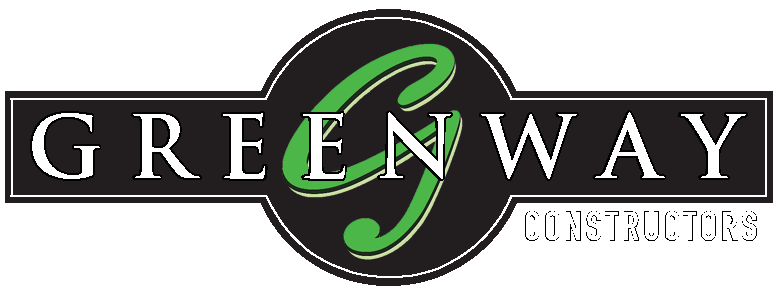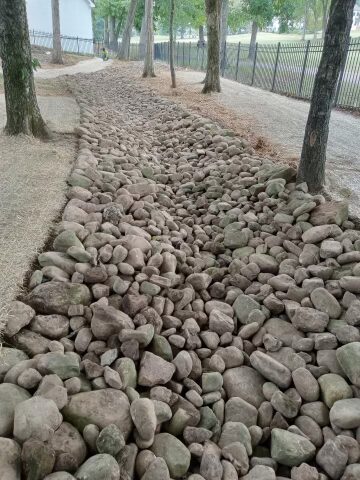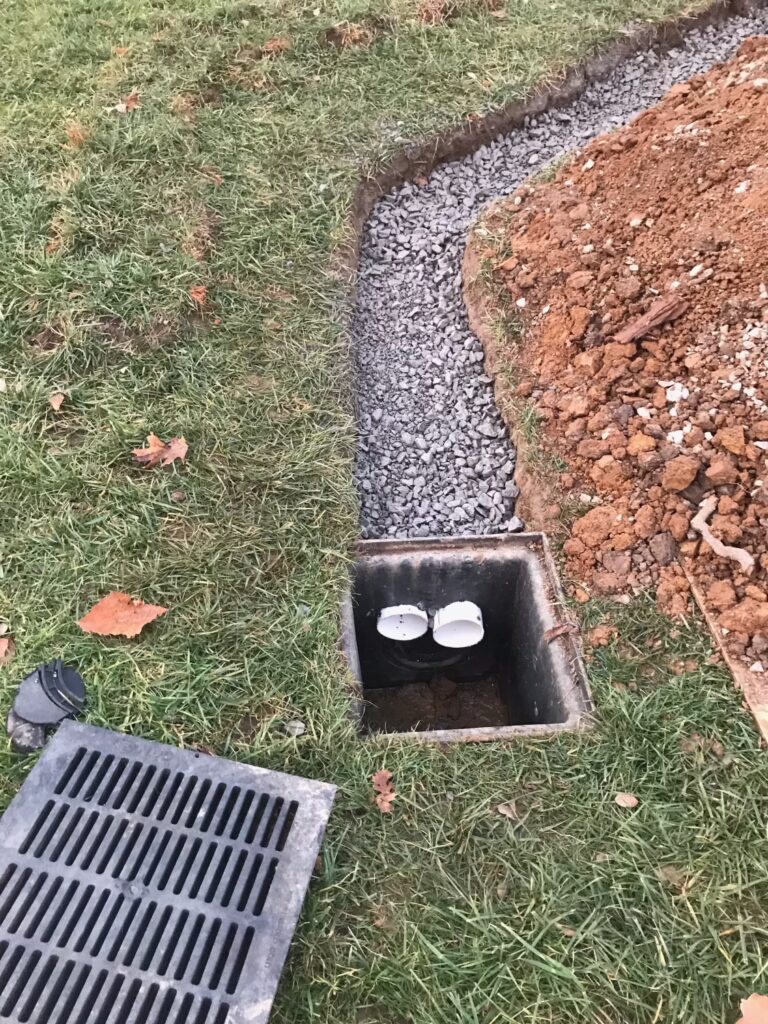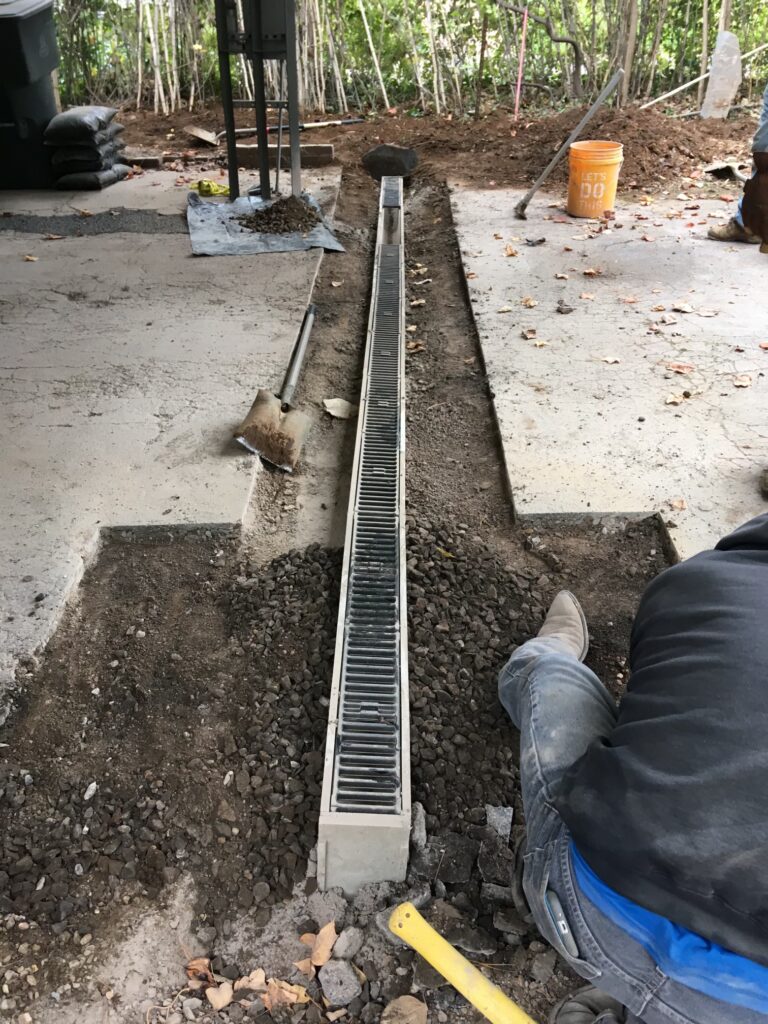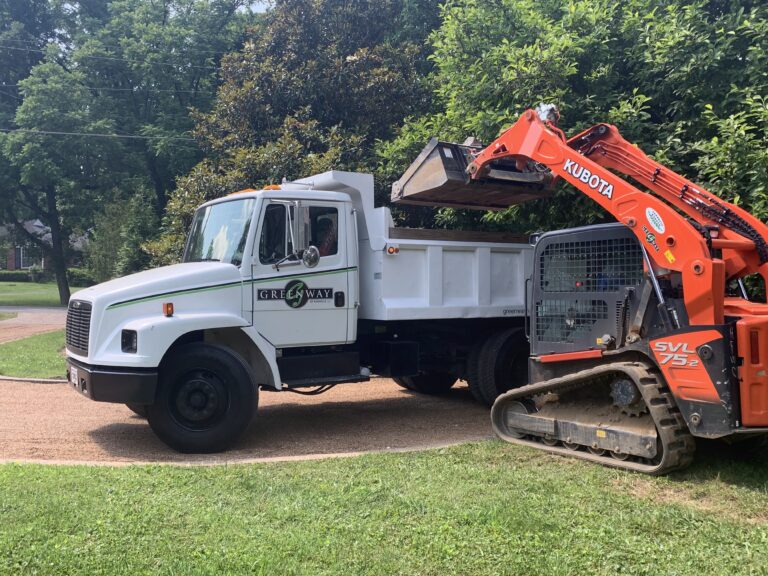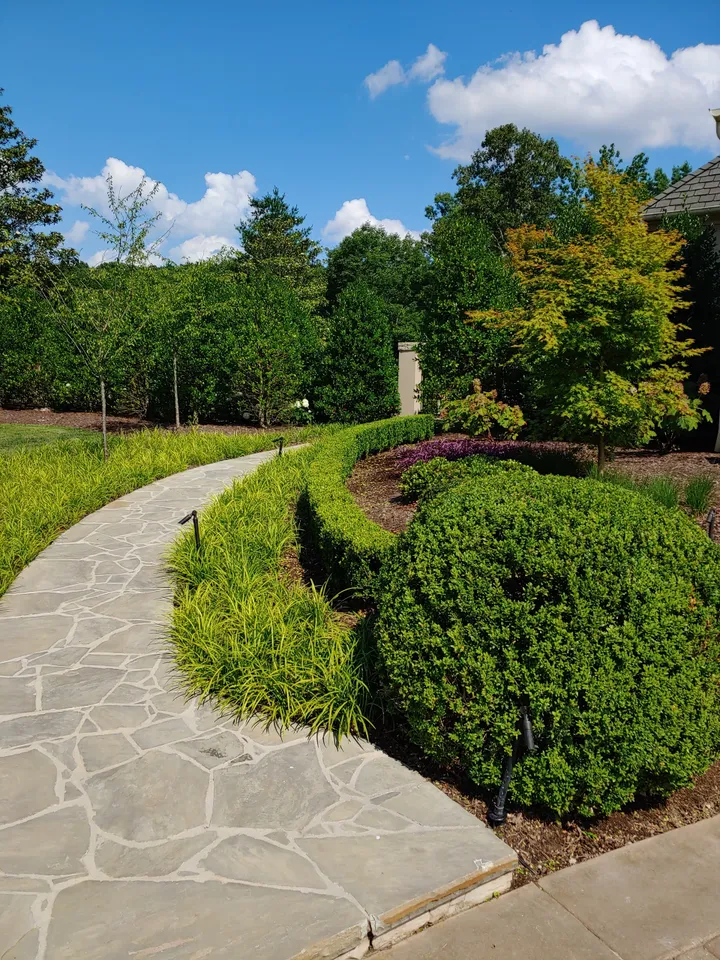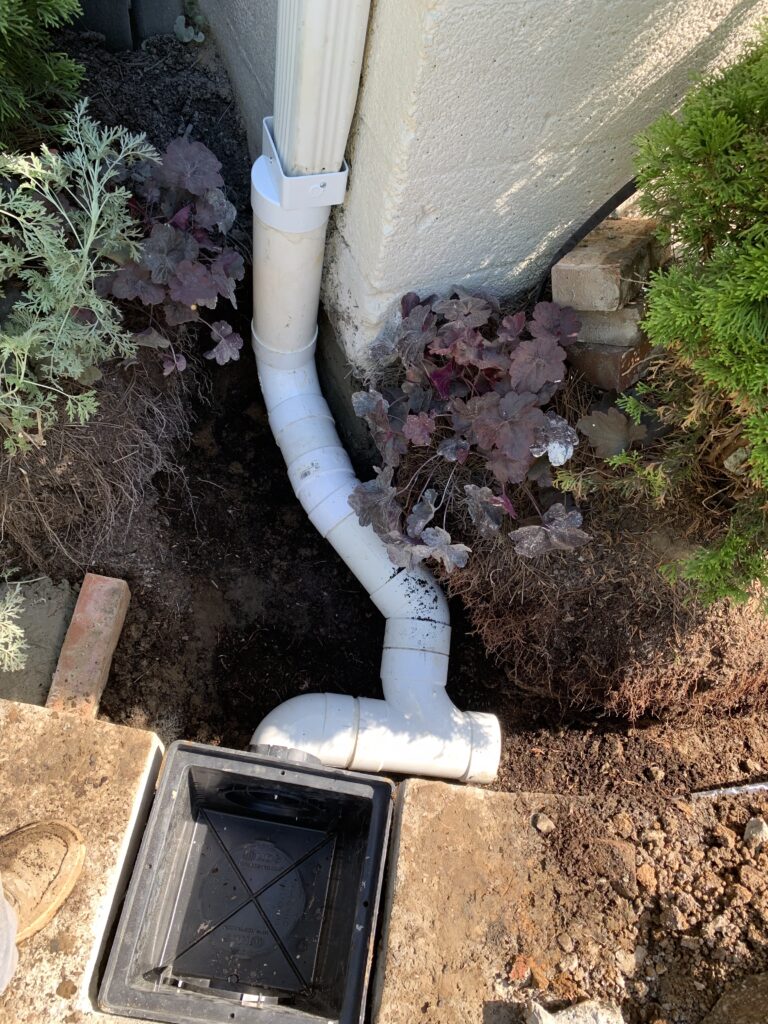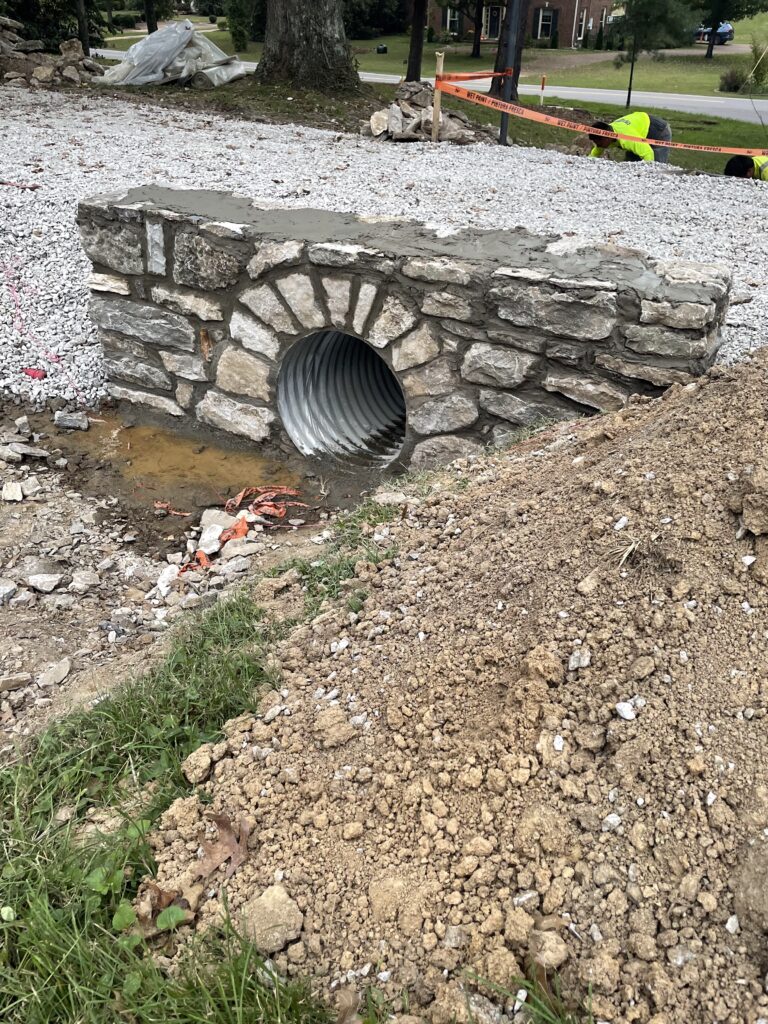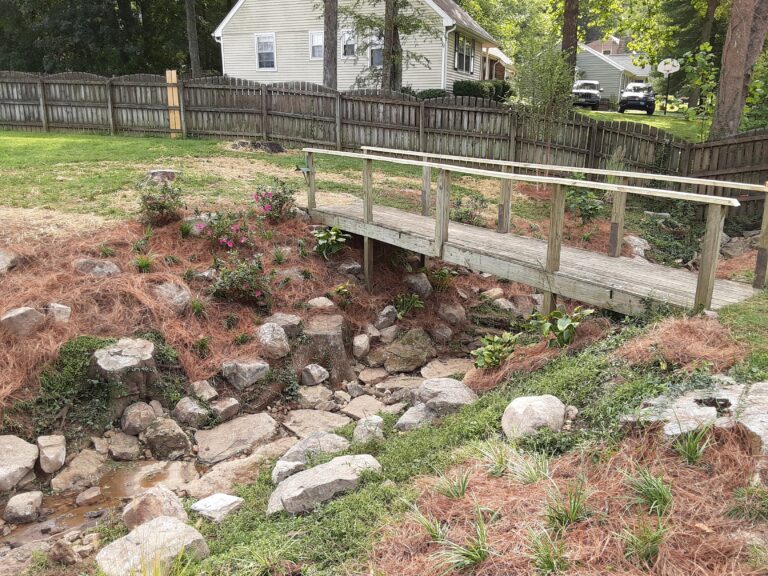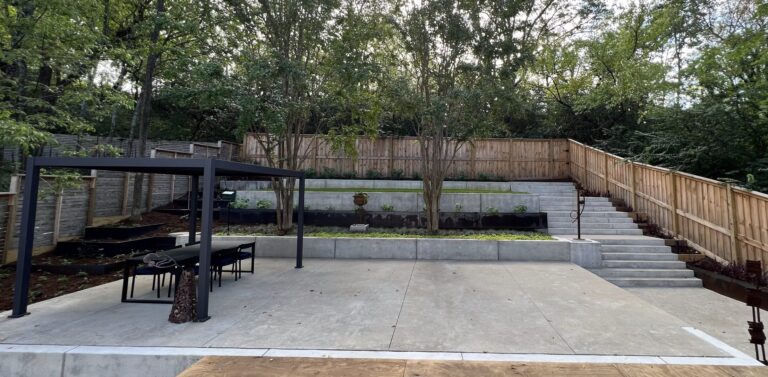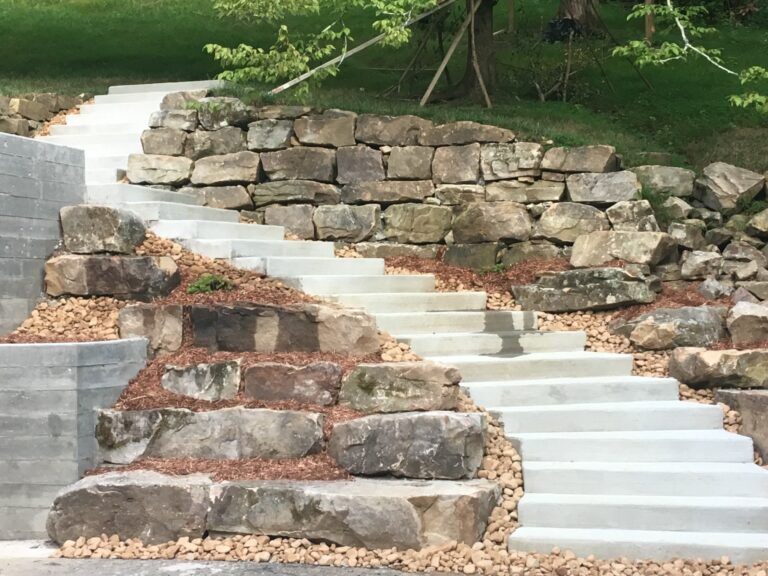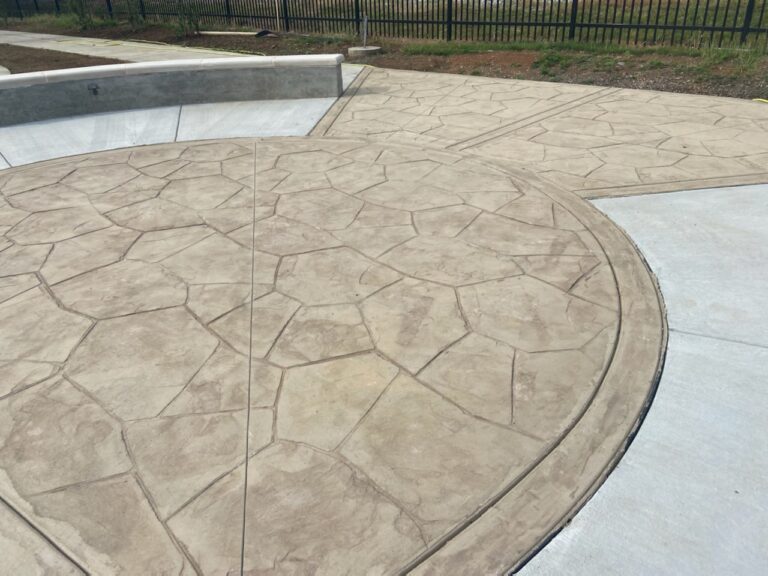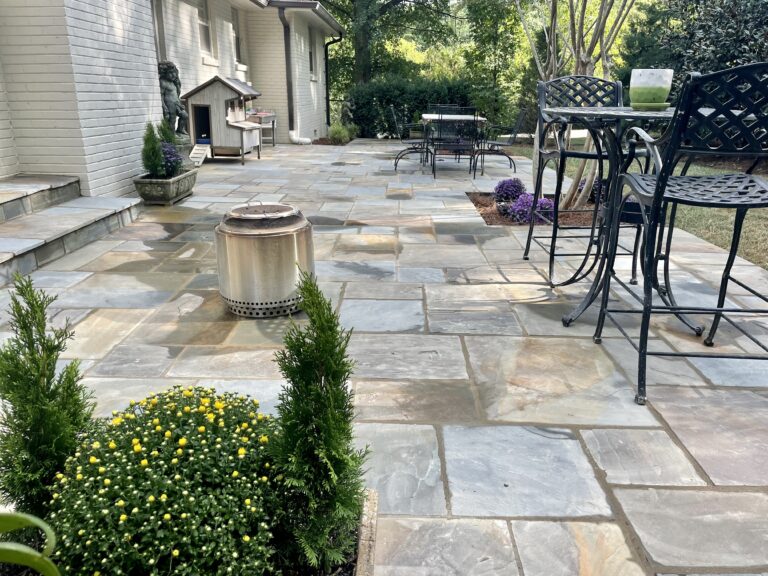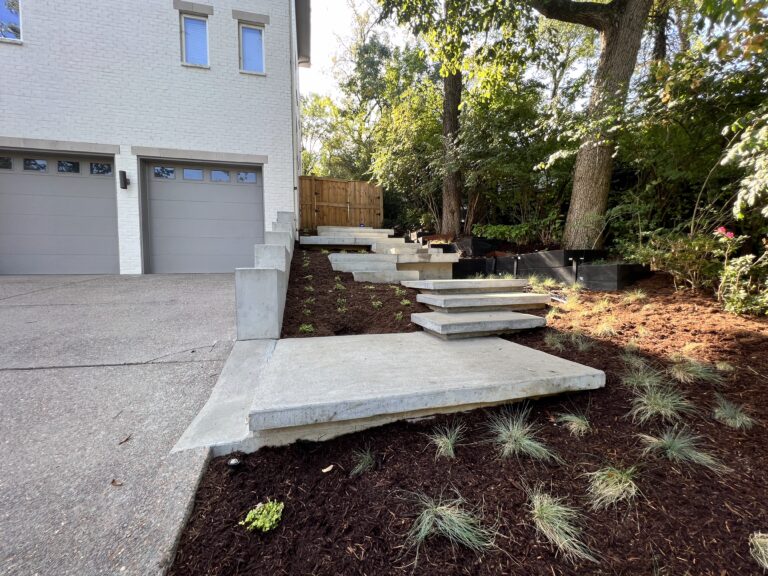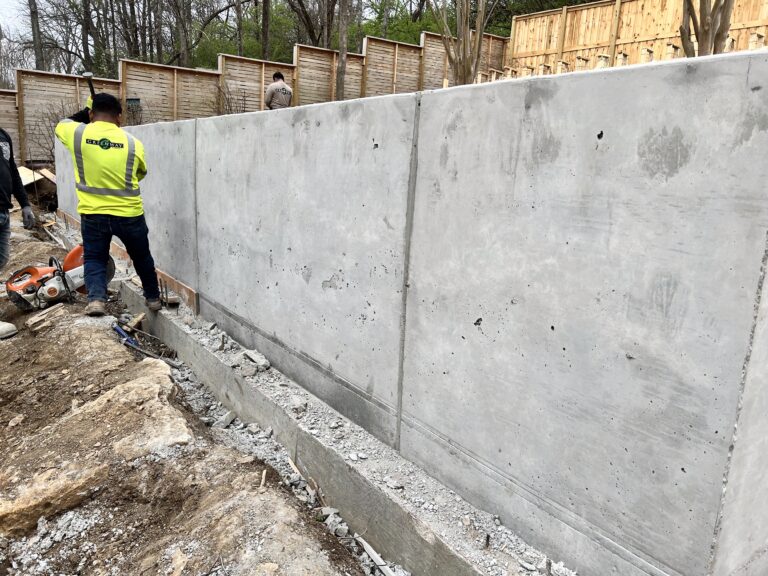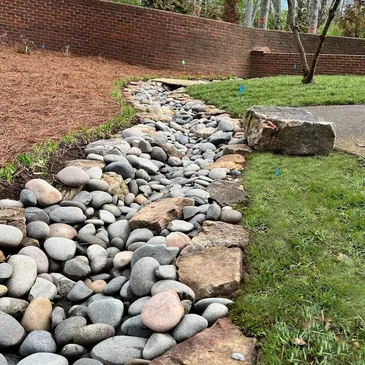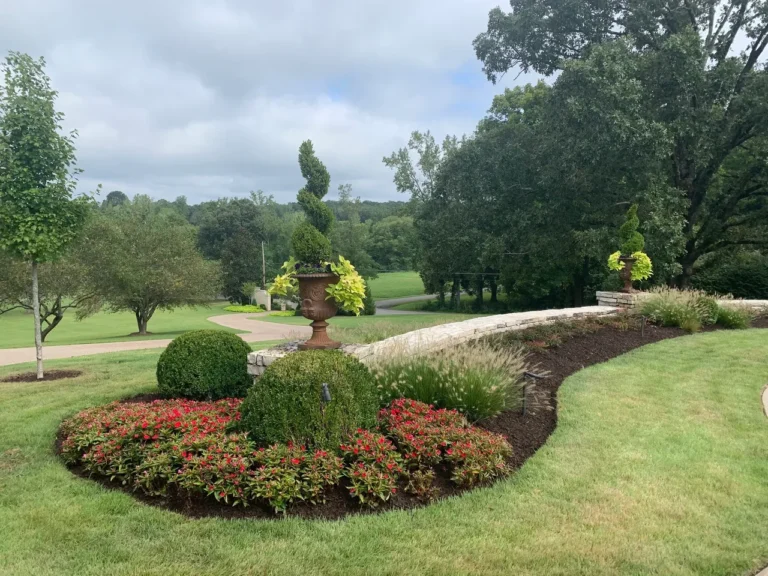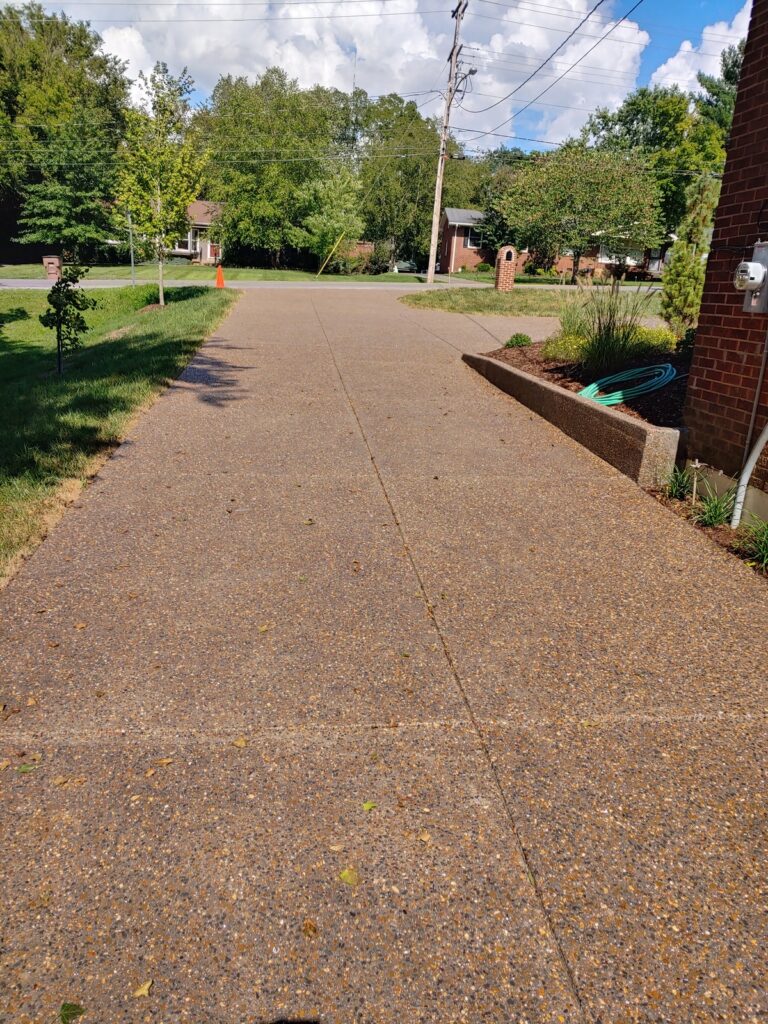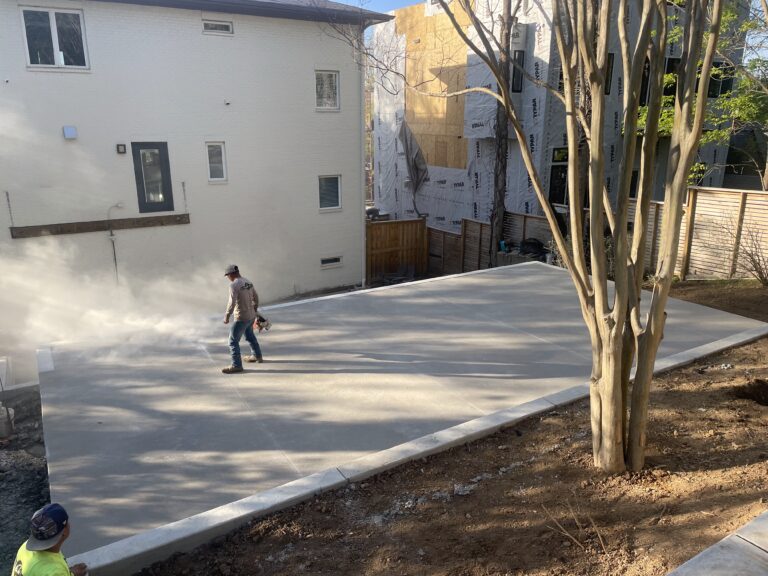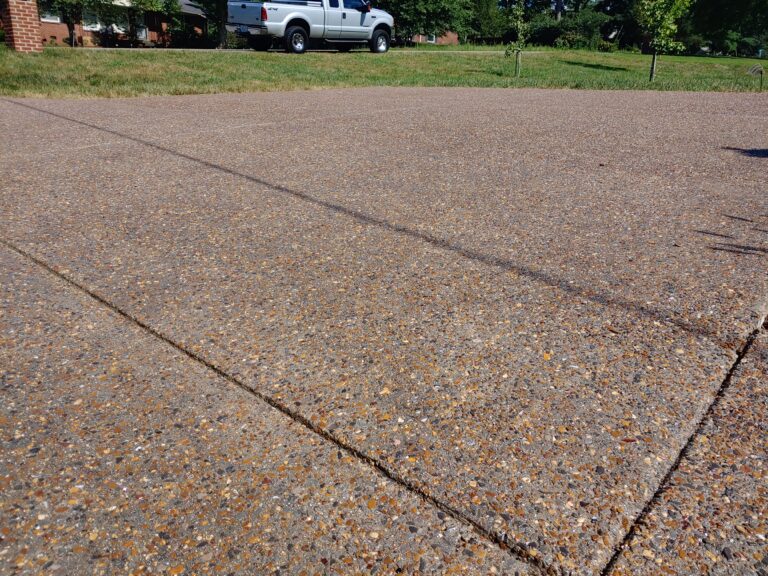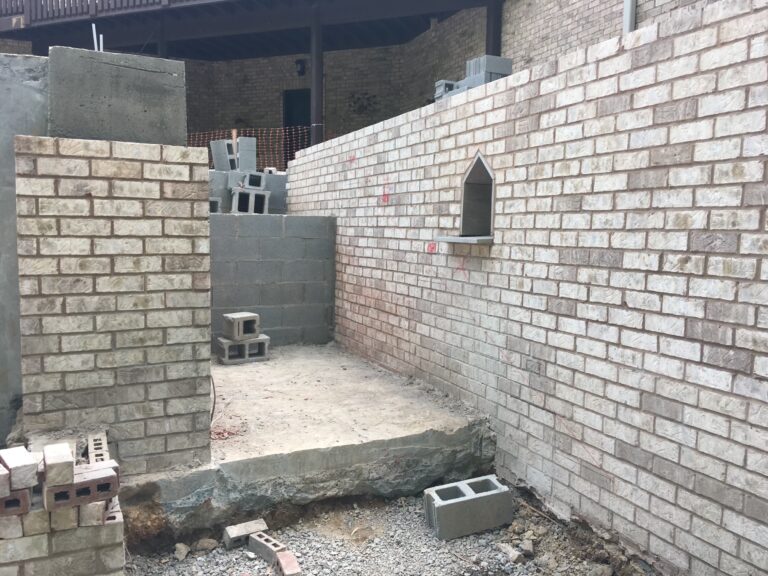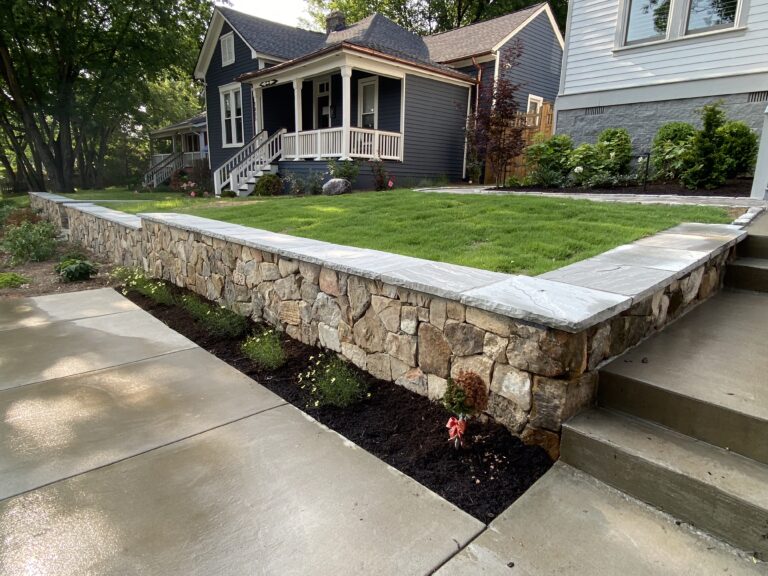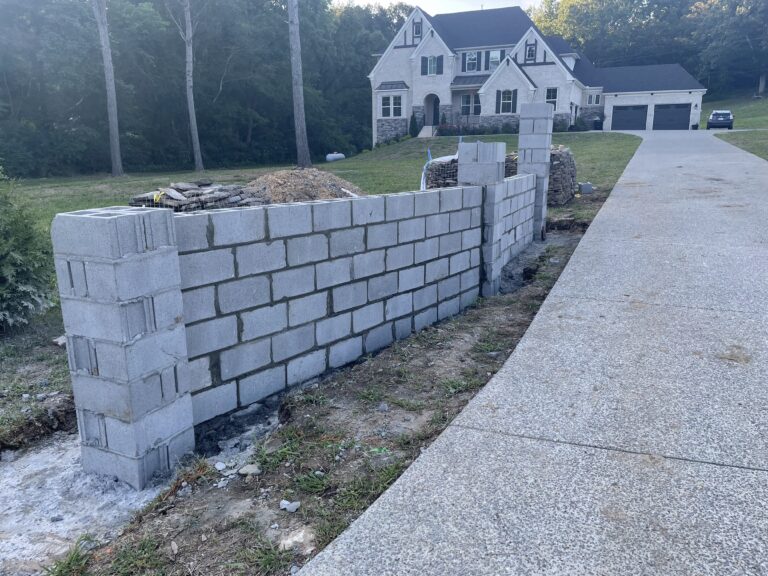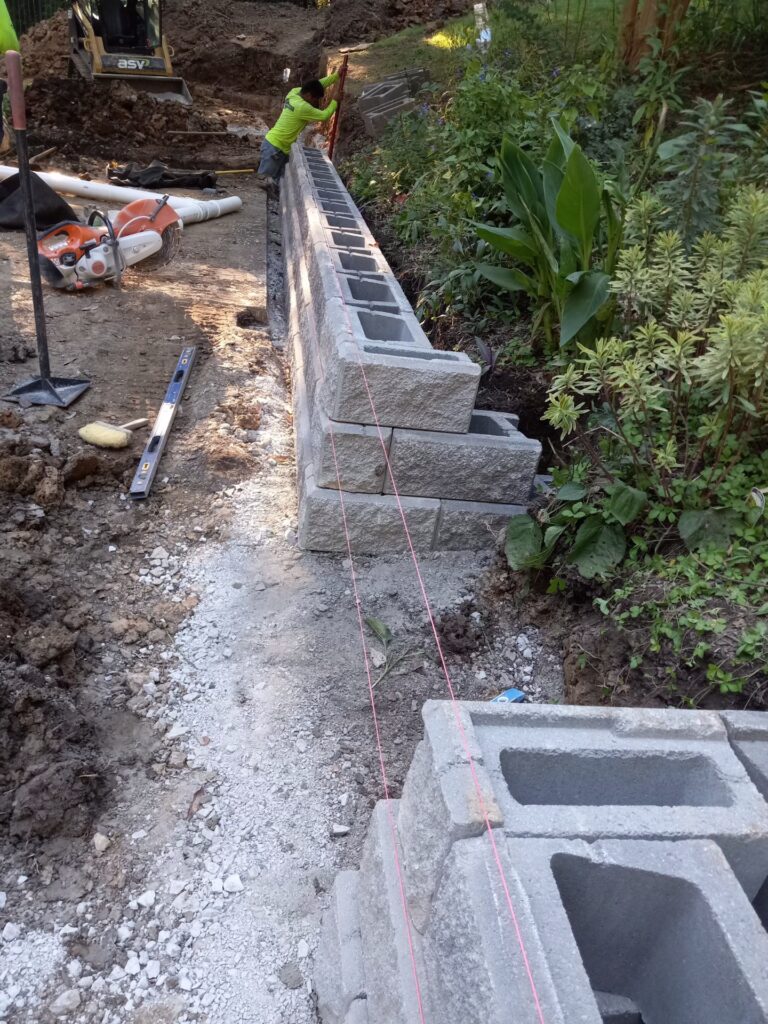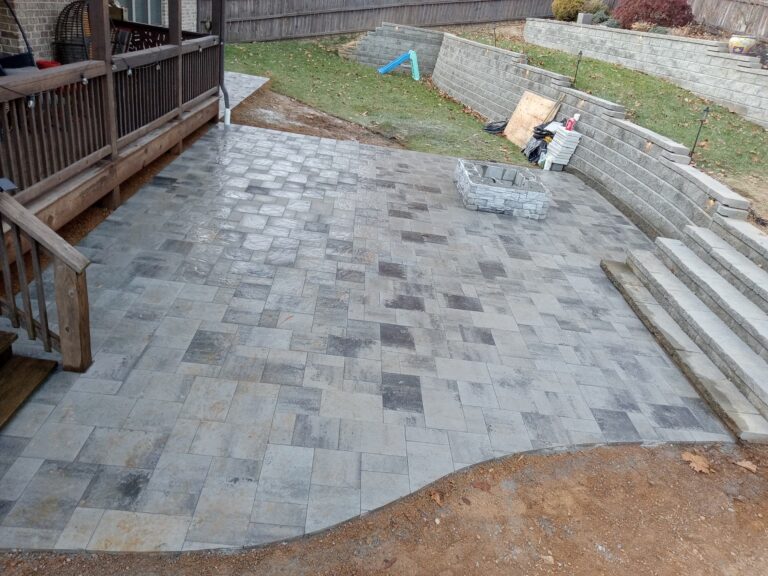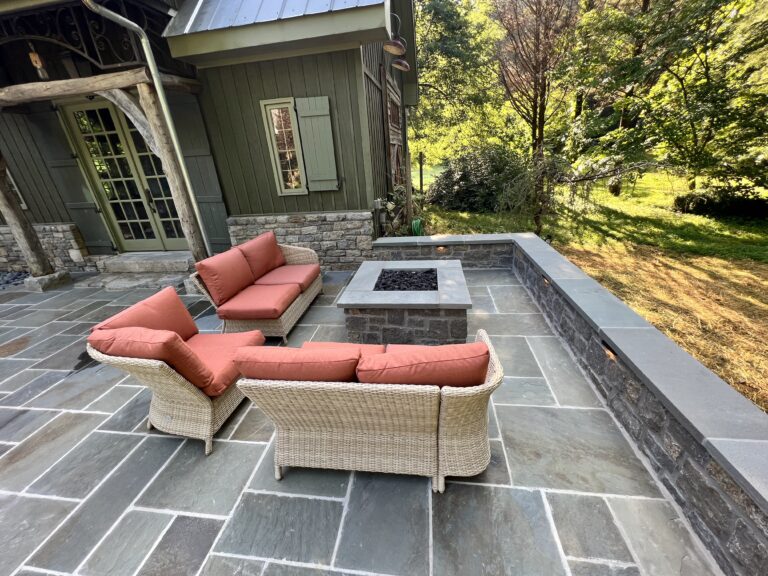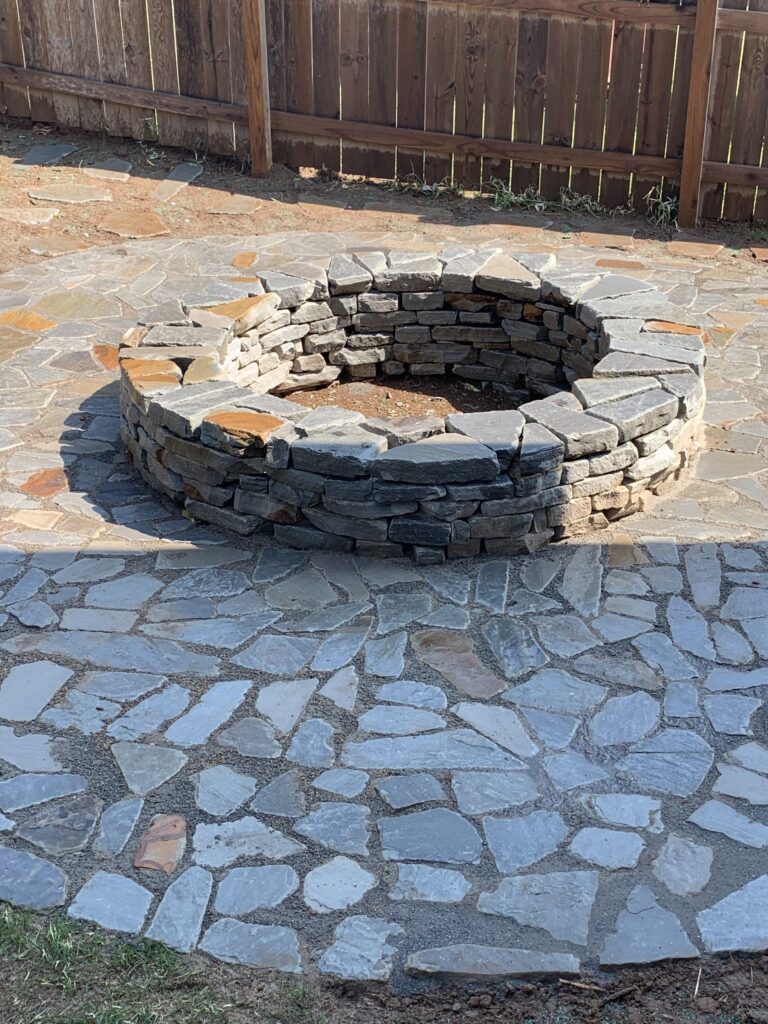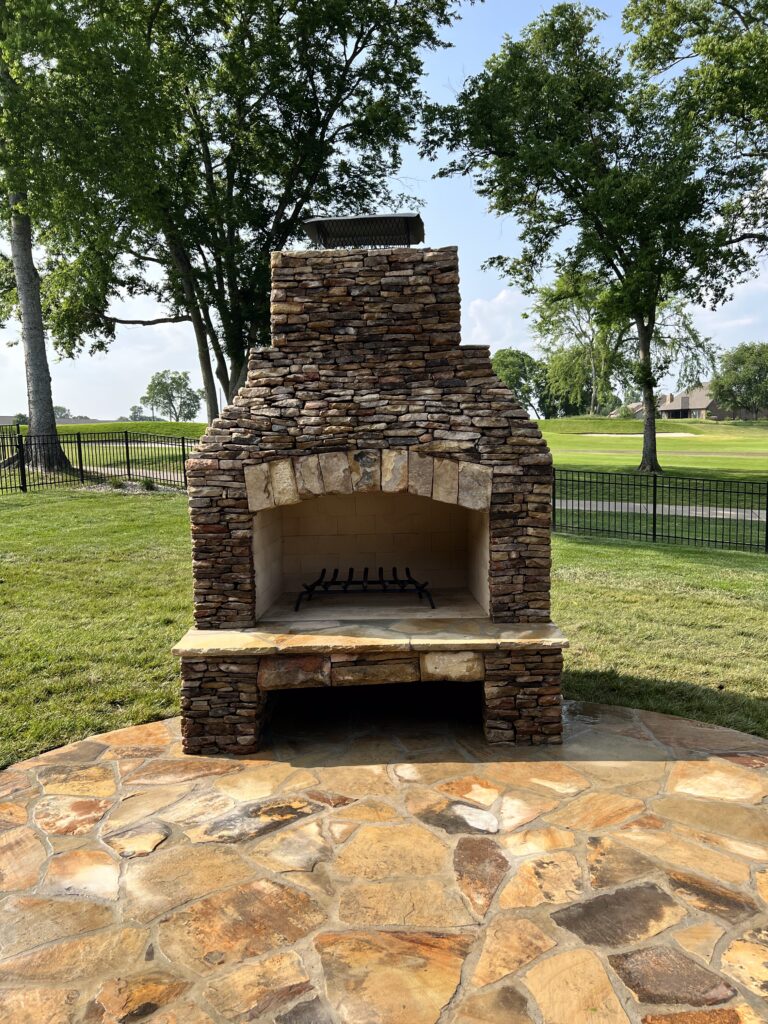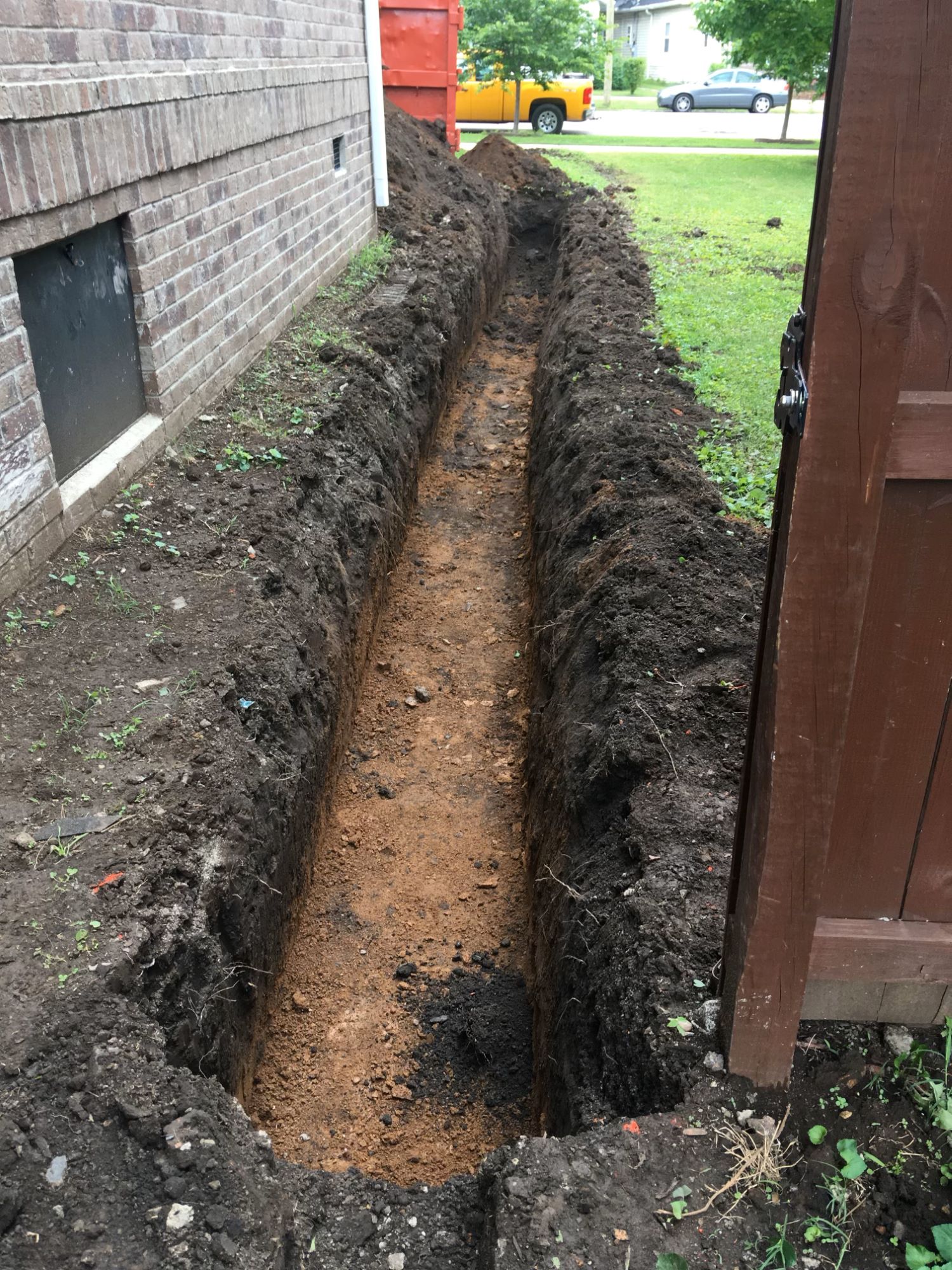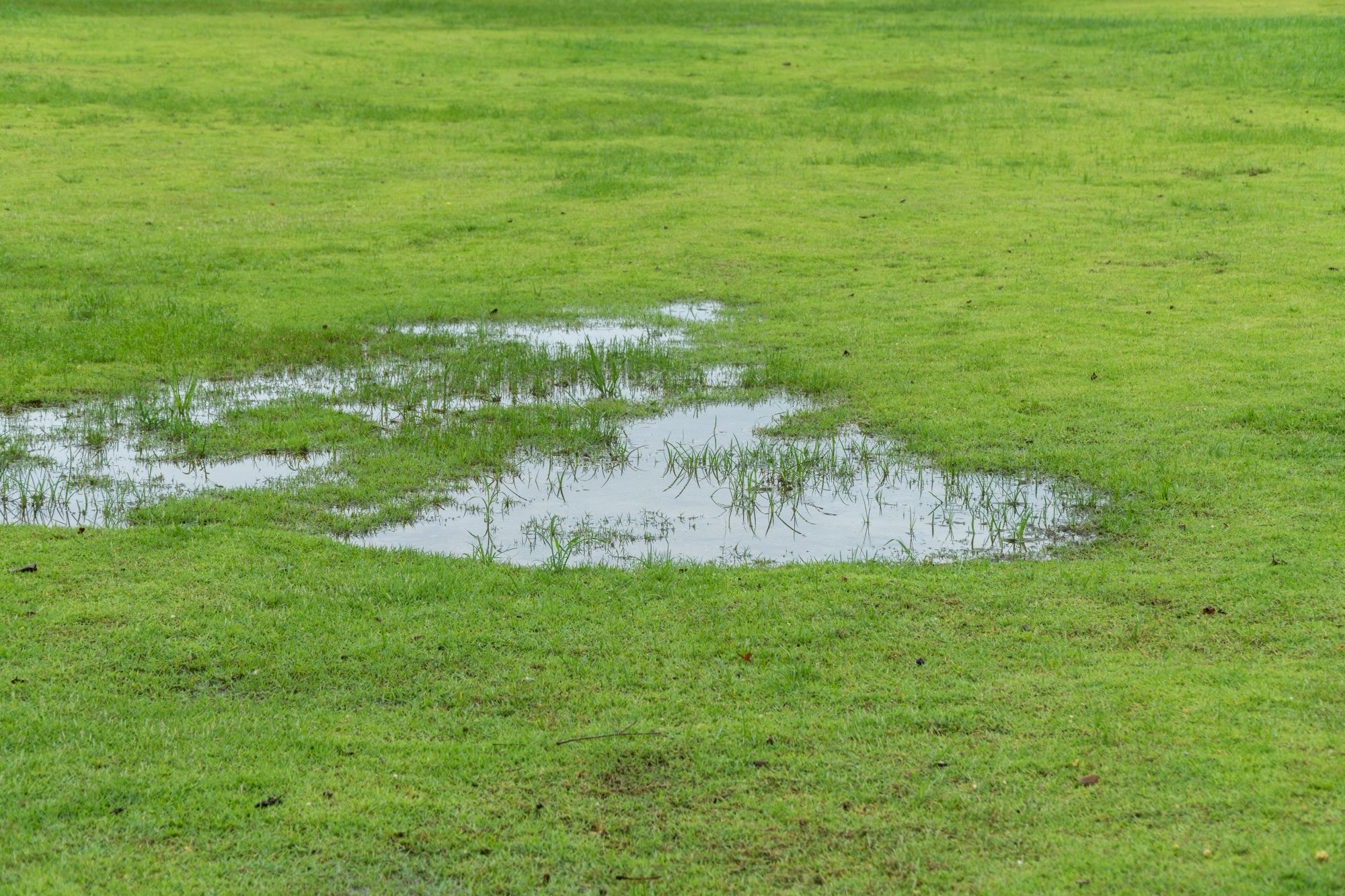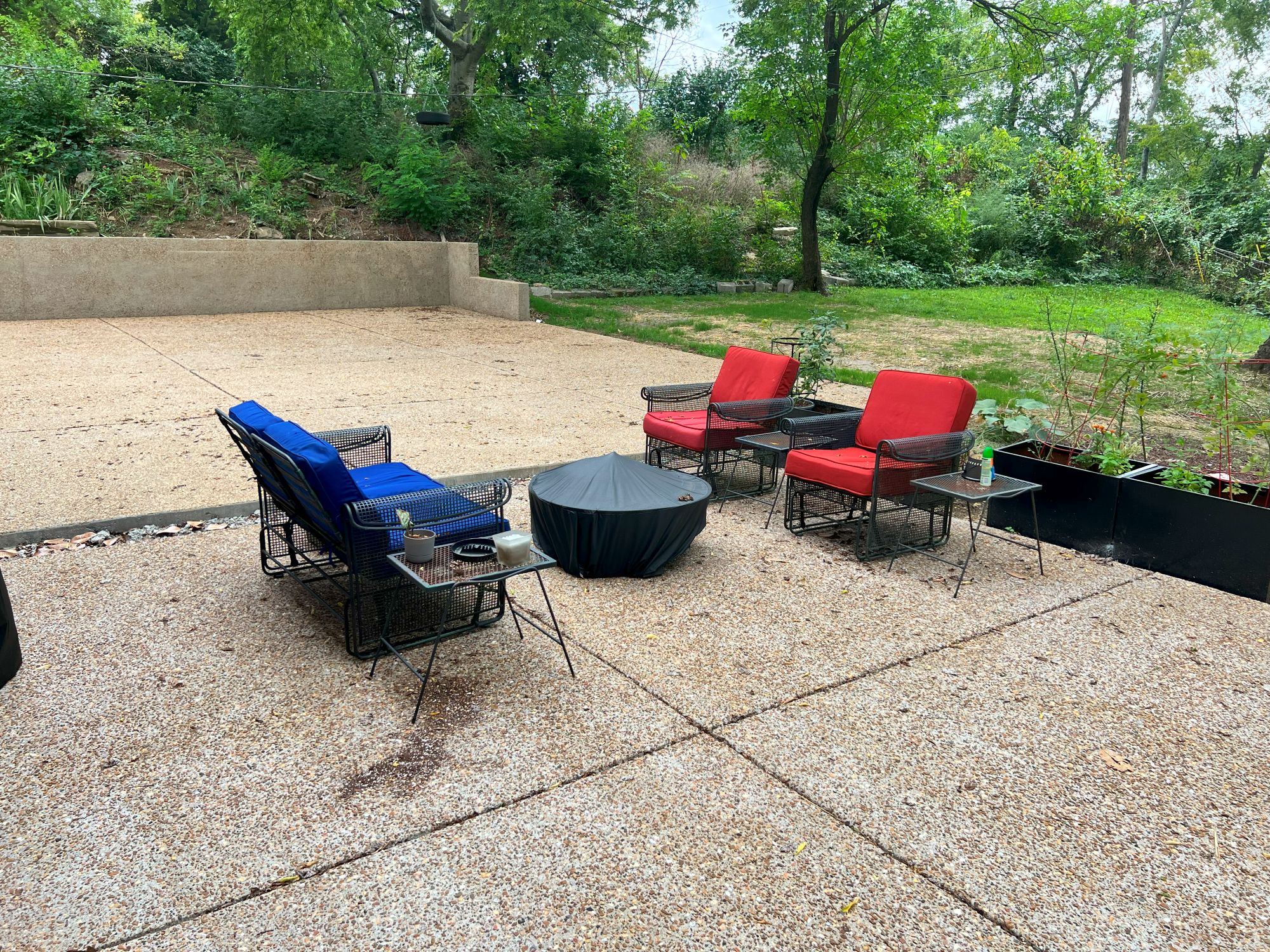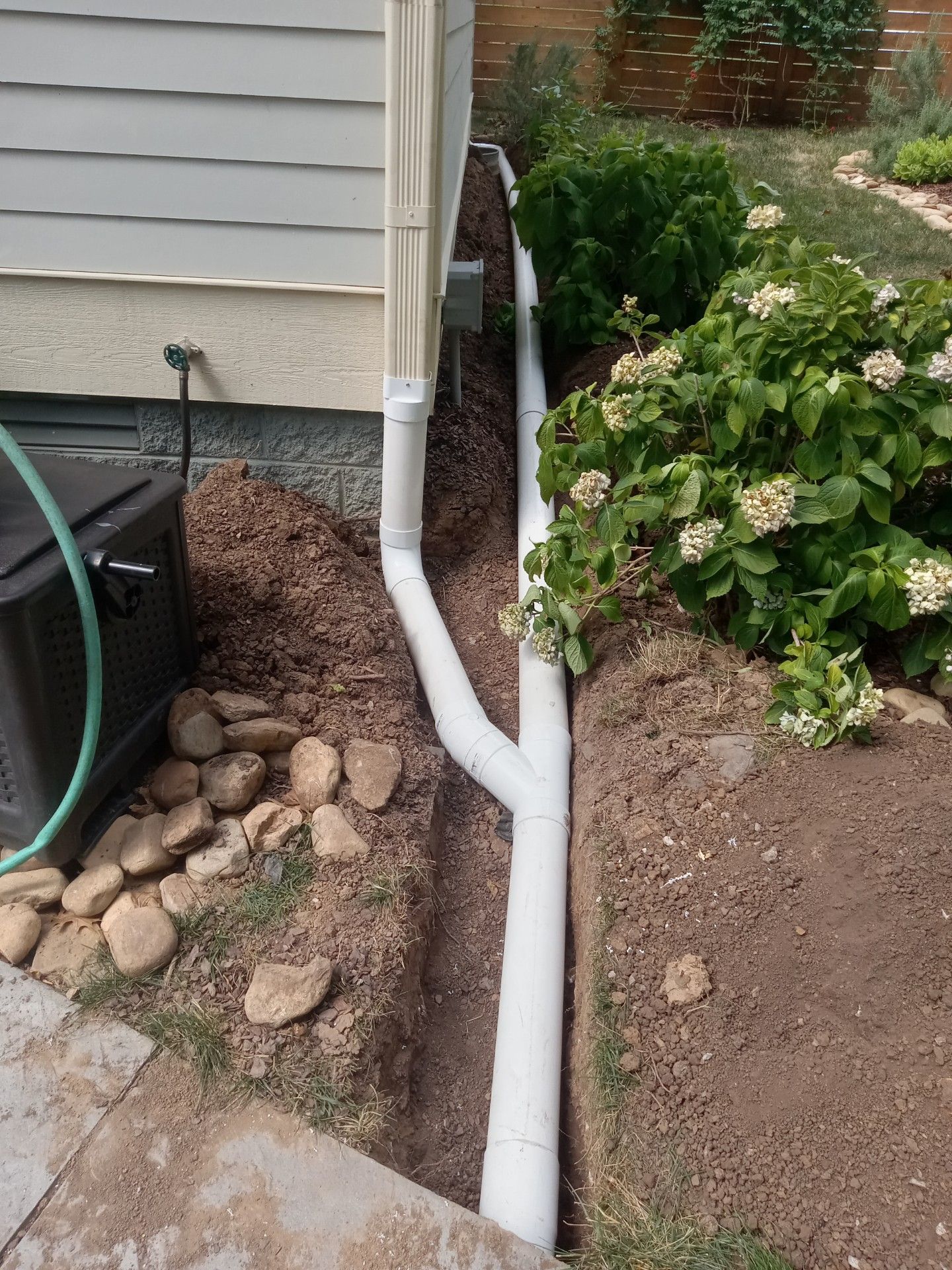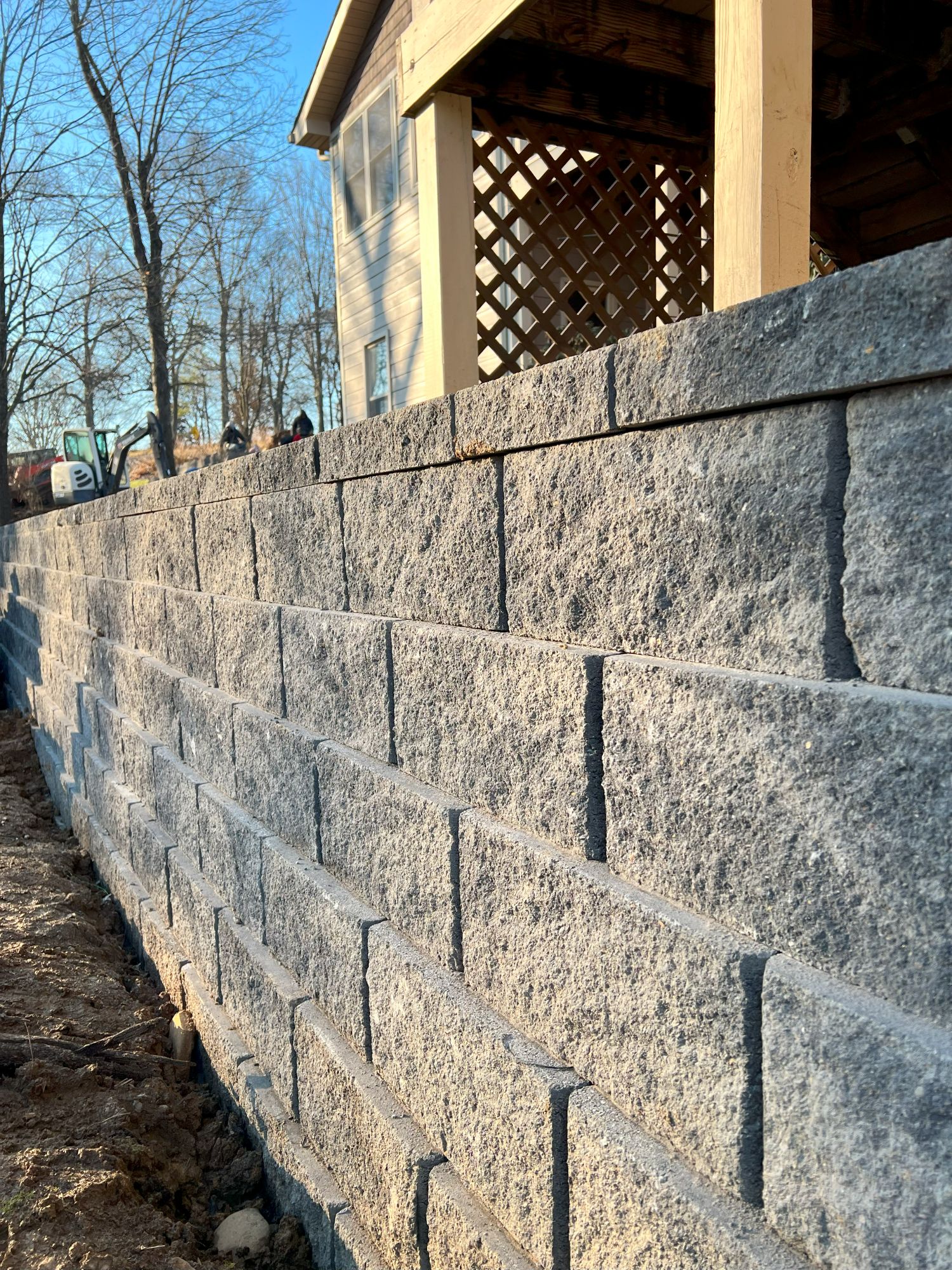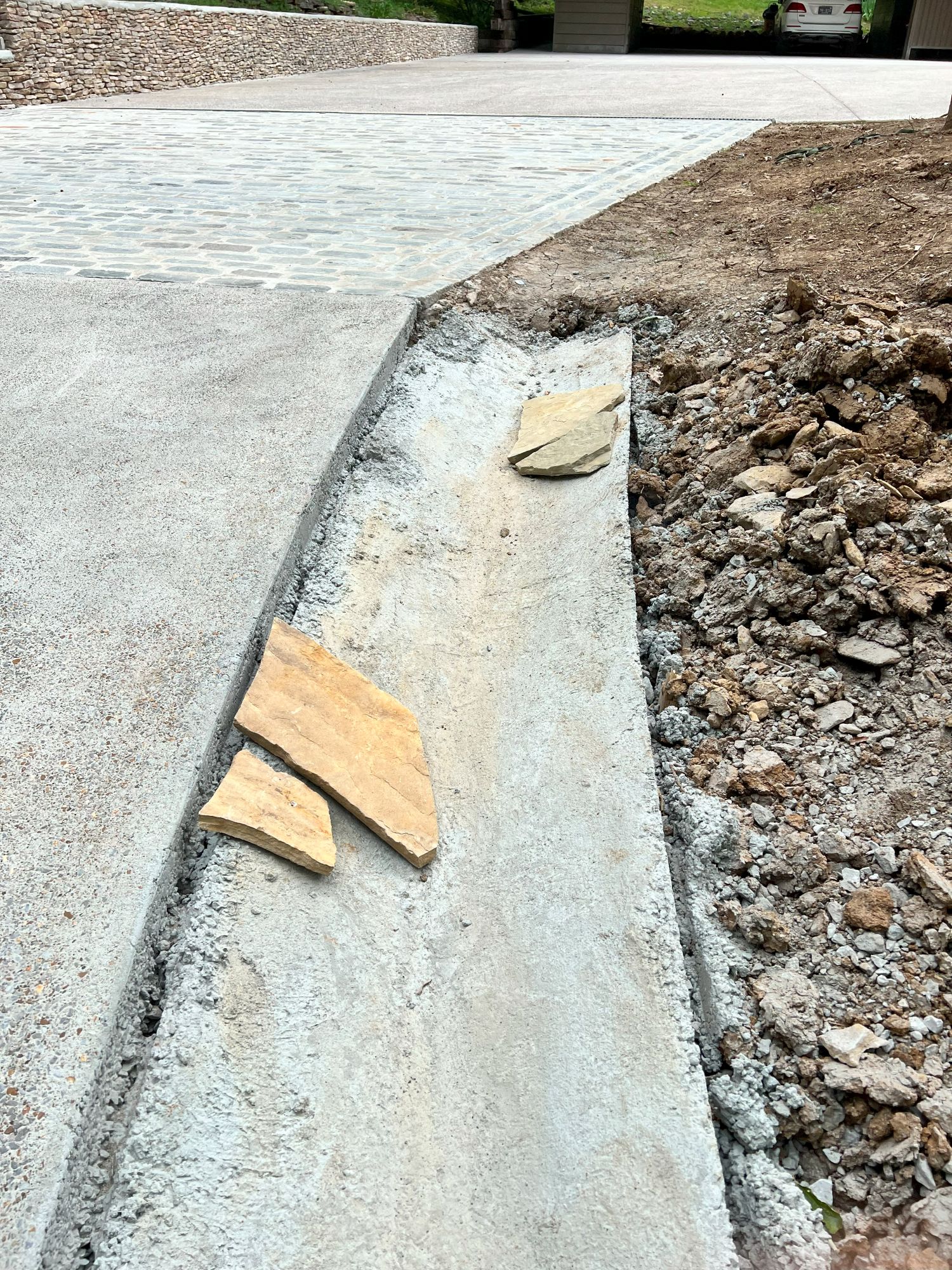When a heavy storm soaks your lawn, the water shouldn’t sit on the grass after the downpour ends. Your yard should be able to absorb it or redirect it somewhere else. If your yard is holding puddles of water hours or even days later, you have a problem. Your property’s drainage isn’t effective and can lead to long-term issues with both the ground and the house. We’ll help you understand what causes poor drainage, the indicators of drainage problems, and how to fix the issue.
What Causes Water Pooling in the Yard?
Stagnant water occurs when the ground isn’t able to drain properly, leaving water with nowhere to go. There are multiple causes:
- Soil type: If your ground is made from soil that is hard and compact or full of clay, there is less space between the granules where water can sink down. Instead, that kind of soil acts as a seal preventing liquid from going into the deeper layers of the earth.
- Land grade: Flat ground or an area with a low spot won’t redirect the water elsewhere. When there is a slope, liquid will travel in that direction instead of sitting still. Without an angle in the ground, there’s nowhere for it to go.
- Obstructions: A drainage system like pipes or gutters is useless if they’re blocked by debris such as leaves or grass clippings. Backed-up drain pipes will prevent water from flowing through them.
- Too much irrigation: If you are watering grass or plants, it’s possible to overdo it. If your irrigation system is running too long or is on when there has been precipitation, the ground will become oversaturated.
Why Is Water Pooling in the Yard After Heavy Rain a Problem?
When water doesn’t drain from your yard, it can damage the nearby plant life. Grass, trees, and flowers all need water to survive, but too much hydration will kill them. Excess moisture also makes the ground unstable, affecting the foundation of your home and nearby structures like patios or walkways. This can lead to long-term damage, including cracks in driveways and leaking of water into the foundation, resulting in expensive repairs. If the water makes its way into the foundation or basement, it promotes the growth of mold, which can lead to illness. Excess water in the yard also poses a safety hazard for people walking through it, since they may not be able to see holes or hazards in the area. Pests, including mosquitoes, are drawn to standing water, posing an increased risk of vector-borne illness.
What Are Signs of Poor Landscape Drainage?
The main indication there’s a drainage problem on your property is standing water that doesn’t disappear shortly after a storm ends. If your yard turns into a waterfront view after rainfall, it’s time to take action. You may also note overflowing gutters during rainfall that indicate a blockage, leading to water collecting underneath the pipes at the house’s foundation. Keep an eye on what areas tend to accumulate water, as that indicates the main problem spots. If water is collecting around physical structures like your foundation or driveway, be sure to inspect for cracks and damage that may need to be repaired. Even if you don’t notice accumulating water, damage to concrete or pavers may be a sign of underlying drainage problems.
“Work with skilled Nashville hardscaping and outdoor construction professionals who understand your vision and respect your schedule. Contact us for a free quote!”
What Methods of Landscaping Drainage Can Fix the Problem?
There are several ways to fix landscaping drainage issues to stop water from pooling in your yard. The right approach will depend on the space, and you may need to use a combination of methods to achieve the best solution. Working with an experienced landscaping contractor will help determine the best approach for your unique situation.
A common solution is to install French drains in affected areas. This is a system of pipes, usually made from PVC, set deep within the ground. Covered in gravel before replacing grass over the top, the pipe creates an escape route for any water that collects above it. By giving the water space to sink down with the gravel, the pipe collects the liquid and shuttles it off to a predetermined area that can handle it. This could be a nearby body of water, storm drain, or dry well. Installation of a French drain requires careful calculation and execution. Before starting, you must determine the depth and placement of the pipe so that the water is diverted appropriately, otherwise you just move the problem from one location to another. Installing a French drain requires significant physical effort to excavate the ground, place the material, and recover the area.
You’ll want to think about prevention of erosion when installing landscape drainage solutions. Retaining walls are an excellent way to prevent movement of soil when the flow of water happens. Made from materials like brick, concrete, or stone, retaining walls help hold the land in place so that it doesn’t wash away and create additional landscape issues. It is often combined with French drains to create robust protection against future drainage problems.
Land grading is another option to reduce pooling of water in your yard. Filling in low spots and creating gentle slopes where the land is flat helps guide water elsewhere instead of staying where it lands. Since this involves movement of large volumes of dirt to change the plane of the area, hiring a landscaping contractor is recommended; they have the equipment and experience to do so correctly. They’ll also know the correct grade or angle that the slope will be—you want a grade that isn’t so steep it leads to erosion but steep enough that water drains away.
Consider adding a swale, which is a shallow slope with a broad surface area that gives liquid extra space to be absorbed. Adding water-seeking plants to the swale provides extra sources of absorption and helps limit erosion. They’re not only a functional drainage solution but an attractive landscape feature as well.
How to Make the Improvements Last
Maintenance of your property is the best way to protect the ground and the investments you make by installing drainage solutions.
- Keep drains and gutters clear so that the water doesn’t back up.
- Watch for early signs of water pooling or land erosion, then address them as soon as you can so they don’t worsen.
- Avoid quick fixes—it can be tempting to patch something up or use temporary measures, but these often don’t last and can develop into larger problems.
- Work with a landscaping contractor to decide the best ways to improve your drainage and get the solutions installed correctly.
- Aerate your lawn to loosen packed dirt, allowing for water to sink in instead of sitting on top.
Whether you’re experiencing water pooling in yard spaces for the first time or it’s been going on for years, you shouldn’t delay in fixing it. The longer it goes on, the greater the damage to your property and the higher the risk for more expensive problems such as foundation damage.
Get rid of your drainage problem quickly and effectively with the expert contractors at Greenway of Nashville. We’ll provide you with the perfect drainage solution for your home and do the heavy lifting for you. Don’t wait until the problem becomes bigger and your home suffers—contact us to set up a consultation today. Submit a form on our website or call (615) 238-4574 for a free, customized plan that will solve your standing water problems for good.
Read more content related to:
